Challenge
shelter for two air compressors, two generators, at least 60 scuba dive tanks, associated gear and maintenance trinkets
must be as sound-dampening as possible
must survive the rainy season (extra meter of water, continual dampness)
must provide enough circulation to keep the generators cool
Limitations
island only accessible by three hour boat ride
termites
company owns small boat, can carry few materials in each trip
no electricity/power tools
Available Resources
jungle: small trees (the large ones have already been logged for the building of the restaurant), clay-y soil a few centimeters below the topsoil
beach: sand. sand. sand. beach debris, driftwood, trash
restaurant: cans, bottles, cardboard
dive shop: remnant wood (all shapes and sizes, careful of the scorpions), miscellaneous tires, some basic carpentry tools, manpower
Design
Given these needs and limitations, I designed a very simple earthbag structure on a gravel-filled tire foundation. There’s no drafting paper on the island – below is one of the working drawings.
We started by clearing the site. The site was pretty much chosen for me, but I moved it a bit to avoid coming too close to existing trees and let the drainage work for us. Notice the termite mound… that was quite interesting to move! They have since set up another home not so far away.
We then placed the tires to allow for a 6 meter diameter interior space. The tires were all shapes and sizes, and since we needed two rows to allow for ample drainage clearance for the rainy season we leveled the top of the first row and allowed the bottom of the first and the top of the second to stick out all catty-wompus. This would not pass building code in the US, but… there isn’t building code here nor insurance agencies to sue. I recommend getting tires of a uniform size. It was a mathematical jungle gym to arrange the tires to preserve the interior dimension and match size on all four sides.
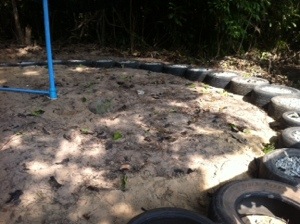
The first row of tires were lined with cardboard from the restaurant and pounded with about 2.5 half-bags of gravel. We used a small sledgehammer to compact the stones and shove them into the rim spaces of the tires.
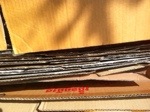
 The second row I first affixed to the first with 10cm screws (the only day I used the diesel generator), lined the bottoms with two bags (which the gravel came in) and then ample cardboard from the restaurant. I placed the door form on the first row, making sure it was level, plumb, and removable (and went through more mathematical contortions to match the second row of tires to the interior dimension while staggering the joints). Each tire then got compacted gravel.
The second row I first affixed to the first with 10cm screws (the only day I used the diesel generator), lined the bottoms with two bags (which the gravel came in) and then ample cardboard from the restaurant. I placed the door form on the first row, making sure it was level, plumb, and removable (and went through more mathematical contortions to match the second row of tires to the interior dimension while staggering the joints). Each tire then got compacted gravel.
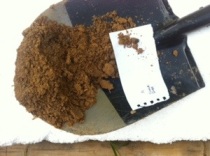
Now, the earthbags. As we waited for the gravel to arrive on the boat during the previous month I dug in the jungle for clay. The soil at the building site is about 3% clay, which isn’t enough to bind the grains of sand sufficiently. During the first week I did some tests (the good old mason jar test) and found the clay-rich soil in the jungle mixed with pure beach sand and just a bit of water, compacted and let to cure for two weeks, made the perfect mixture.
We screened the clay of organic matter and large stones using a fish trap I found on the beach. Passing shovelfuls through the netting also broke lumps and prevented little worms and other animals from a compacted fate. We transported the clay to tarps next to the building site, covered, and waited. Here’s our handy-dandy island wheelbarrow.
Then, using the foot-tarp-hand method of mixing soil, we made a strong mixture of 1 part clay-y soil, 1 part beach sand, and enough water that the particles stuck together when compacted while broke apart when dropped from waist height. The water content varied day to day depending on weather, as did help.
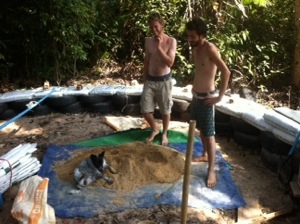
Each row of earthbags we compacted, leveled interior-to-exterior and circumference-wise, and tucked the edges securely. A plumb pole in the exact center of the circle with a rotating arm and a level attached will ensure the walls are plumb maintain a consistent radius. Rows of bags are tacked together with a line of barbed wire running down the center of the row, held in place by bricks.
The door form and window forms will be removed, as the walls will hold the shape, and to attach a frame to the walls we staggered “velcro strips” along the form. These are simple T shaped wooden blocks into which the frames can be anchored.
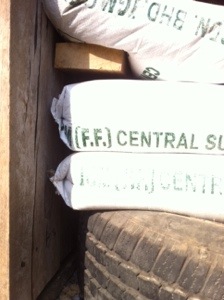
The roof will be a simple beam + thatch structure, anchored into the top rows with earthbags.
If I return to the island I will plaster the bags with a slaked lime plaster over a earthen plaster, and pack the tires with concrete and cans. The floor will be concrete slab on plastic bottles.
The whole process is fairly straightforward, simple, and requires man labor over petroleum labor. One of the workers, Send, said it best: it’s so much easier and faster to use brick – why not use brick and concrete? To this I ask: is it actually faster to use brick and concrete? How many hours does it take to mine the materials needed to make brick? PLUS concrete? PLUS to cure the materials, package, and transport? not to mention the energy required for these processes?
The only lecture I walked out of in University was when the prof said “you know, it takes less time and energy to farm using the monoculture and tractor system than subsistence, hand labor”. I raised my hand and disputed this statement, and she said simply “well, you’re wrong”. That was the end of that lecture for me, but I know her view is commonly shared. I would rather expend renewable human energy than non-renewable petroleum based energy systems. But that’s just my opinion, and these techniques certainly have their drawbacks if time, labor, and care are in short supply.
I have learned an incredible amount from this project. Most importantly I learned how easy and simple it is to build one owns’ structure, and that you and I CAN do it. 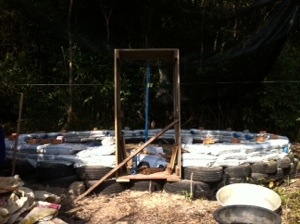




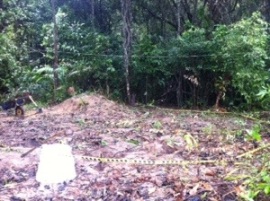


Ah! Ah! Aliza! How good it is to see you are working on great projects and biking around the world. I had this series of dark-adventure lucid dreams the past two nights. You were in them both and so this morning I tried to find your email through facebook (don’t have one, so I can’t find yours), and ended up here at your awesome blog. I have been reading and will read more. Goodness it’s awesome to come across this. If you ever make it back this way please let me know, but I won’t hold it against you if not 😉
Love,
~A Little Seedypoo